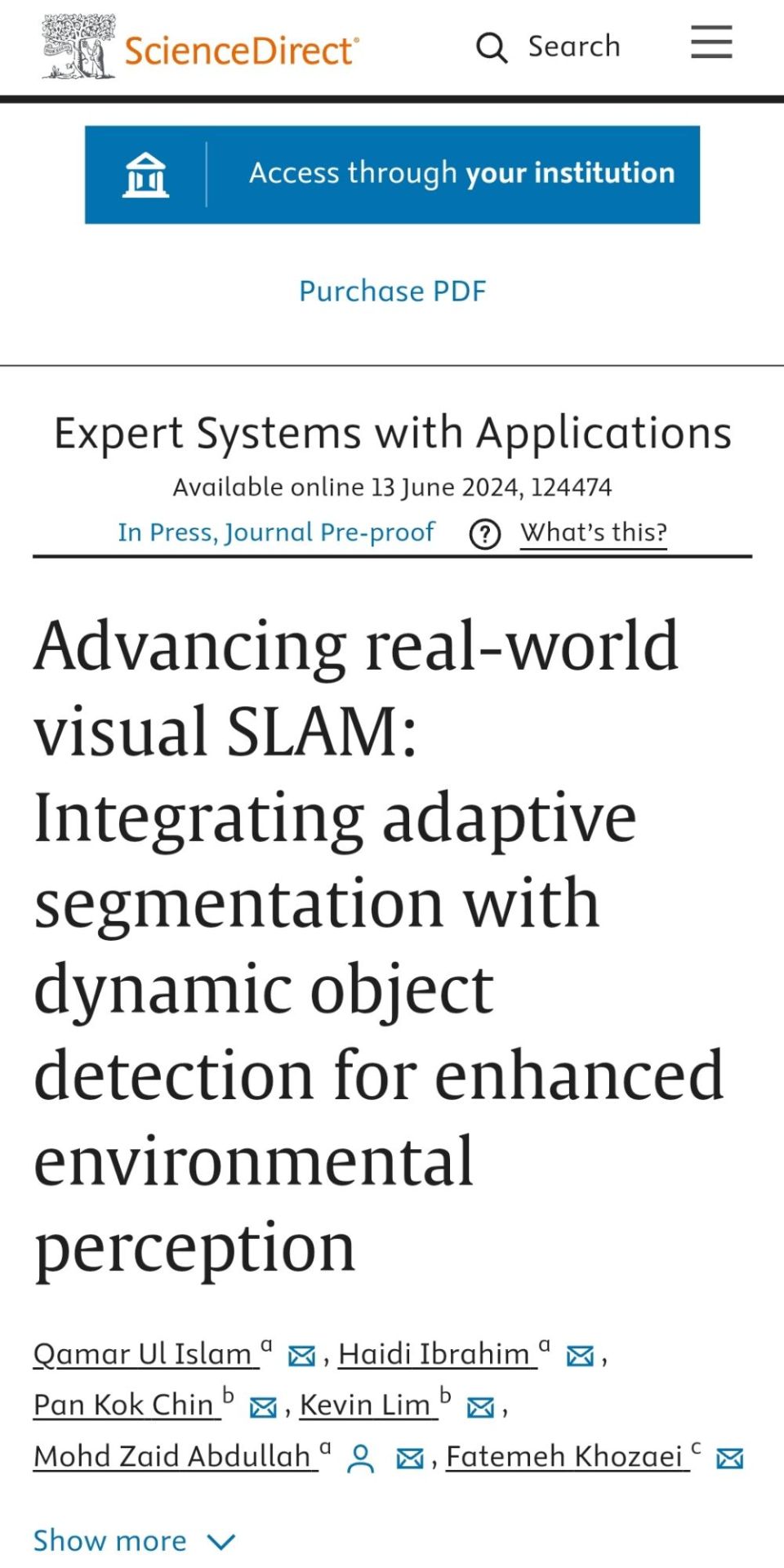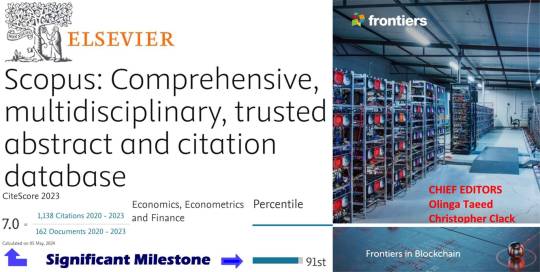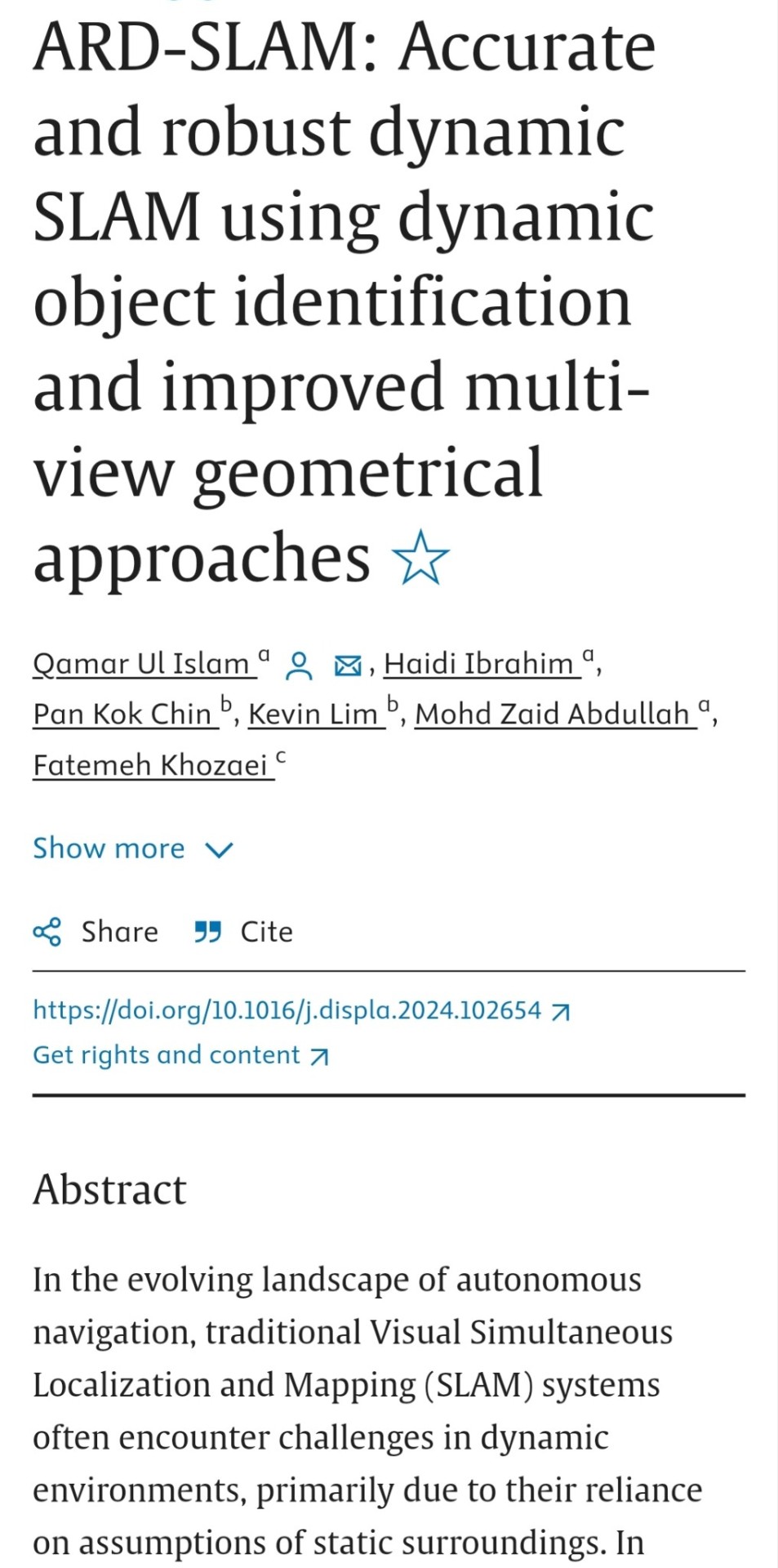#CiteScore
Explore tagged Tumblr posts
Text
Journal ranks 2022
As I’ve done every year for the last 15 years, I can now present the 2022 conservation / ecology / sustainability journal ranks based on my (published) journal-ranking method. Although both the Clarivate (Impact Factor, Journal Citation Indicator, Immediacy Index) and Scopus (CiteScore, Source-Normalised Impact Per Paper, SCImago Journal Rank) values have been out for about a month or so, the…

View On WordPress
#CiteScore#Clarivate#conservation#ecology#Google#H5#IF#IM#impact factor#JCI#journal ranks#scientific journals#Scopus#SJR#SNIP#sustainability
0 notes
Text
SCI vs Scopus: Expert Tips on How to Choose the Right Indexing Database for Academic Publishing Success
SCI vs Scopus: Expert Tips on How to Choose the Right Indexing Database for Academic Publishing Success
Exposure and respect are everything in academic publishing. And so, deciding between SCI (Science Citation Index) and Scopus is not merely a technical one; it has an impact on how your work will be received, read, and accepted.
Both Scopus and SCI are well-known indexing databases, but they differ in their functions. Whether you're publishing your first paper or planning your future top-impact publication, you can choose the right journal and maximize the impact of your research once you understand how they differ.
This is where we help you make the right choice, based on your study goals, discipline, and publishing plan.
What is SCI?
Science Citation Index (SCI) is a quality database that was established by Clarivate Analytics and included in the Web of Science. SCI has been a benchmark for quality in STEM-related research publications for many years.
What sets SCI apart is its rigorous selection process. Journals included here are supposed to meet high editorial standards, undergo peer review, and demonstrate citation influence through their Impact Factor. SCI places a significant emphasis on areas such as engineering, medical sciences, natural sciences, and technology, and is therefore among the top choices for researchers in these domains.
Publication in an SCI-indexed journal is generally considered a badge of research quality. It significantly enhances academic prestige, particularly in institutional promotion and global research reputation.
What is Scopus?
Scopus, owned by Elsevier, is one of the world's largest abstract and citation databases. Although more selective than Scopus, it has broader coverage, encompassing not only science and technology but also the social sciences, arts, humanities, and interdisciplinary studies.
Other than indexing, Scopus has robust features such as:
Author profiles and citation tracking
h-index analysis
Source Normalized Impact per Paper (SNIP)
SCImago Journal Rank (SJR) metrics
Real-time analytics and dashboards
These features make Scopus a more interactive and user-friendly platform, especially for newly rising researchers or institutions with regional application and inclusion.
SCI vs Scopus: Complete Comparison
Let's now distinguish between the two more clearly:
Journal Coverage
SCI is selective and includes only high-impact journals. Scopus consists of a broader list, with space for both top and emerging journals.
Citation Metrics
SCI uses the Impact Factor as its primary measure of assessment. Scopus offers several options, including CiteScore, SNIP, and SJR, providing a comprehensive view of journal impact.
Selection Criteria
SCI journals are subject to a stricter screening procedure. Scopus provides access to newer, local journals.
Research Tools
Scopus is outstanding, offering analytics ranging from author tracking to institution comparisons. SCI focuses on accuracy and the influence of legacy citations.
Update Frequency
Scopus indexes articles more quickly, making it ideal for researchers who want to become visible early.
Why the SCI vs Scopus Debate Matters
Having the proper indexing database has real academic consequences.
Research Visibility: Where you publish decides who reads and cites your research.
Career Advancement: SCI-indexed articles are generally desired by universities for professorial promotions.
Institutional Rankings: Scopus statistics contribute to global rankings, such as QS and THE.
Funding Opportunities: Approval of granting typically requires proof of publication in an indexed journal.
Knowing your publishing goal recognition, impact, or access makes it easier for you to decide between SCI and Scopus.
How Professional Publishing Support Can Help with SCI vs Scopus Publishing
Professional support simplifies publishing. This is how professionals help:
Custom editing according to indexing needs
Experts correct structure, style, and technical sequence according to SCI or Scopus demands.
Assistance with shortlisting the proper journals
Based on your research area, goals, and metrics, they guide you to pick the most appropriate from the list of SCI or Scopus journals.
Support with submission protocols and peer-review feedback
From formatting to managing reviewer comments, experts guide you through it all.
Plagiarism scanning and formatting as per journal requirements
Makes your paper squeaky clean, original, and ready to pass strict screening.
The level of service saves time and guarantees the chances of acceptance.
Tips on How to Choose Between SCI and Scopus Journals
When you're stumped on where to publish, start with these criteria:
Choose SCI
When prestige, broad subject matter, or high-impact measures in scientific, technology, or medical fields are a top priority.
Choose Scopus
If your research is interdisciplinary, local, or from social sciences, arts, or emerging fields.
Consider peer-review standards and readership of a journal
A fast review cycle or a journal for your field can be more effective than seeking high impact in isolation.
Advice from advisers
Make use of tools to analyze journals or consult with publishing professionals to avoid mismatches and missed opportunities.
Final Thoughts: Choosing the Appropriate Publishing Platform
In scholarly publishing, all choices count. Understanding how SCI and Scopus are different allows you to choose the proper platform, target the appropriate audience, and reach your scholarly goals faster.With the right professional academic assistance, researchers can streamline the publishing process, meet indexing standards, and improve their chances of acceptance in top-tier journals.
Whether it is expanding your research portfolio or gaining career advancement, the journal where you choose to publish may be the difference between success or failure.
For individuals wanting to be sure of success from the very beginning, it's wise to seek professional academic assistance to mentor you through this process with confidence.


0 notes
Video
youtube
Understanding CiteScore: A Research Metric. https://youtu.be/XgESkgqn8Z0
0 notes
Text
The Journal of Sexual Medicine | Volume 21 Issue 12
💡 Le Journal of Sexual Medicine monte en puissance avec de nouveaux scores d’impact ! 💡 👉 Avec un CiteScore™ de 6.2 et un facteur d’impact de 3.3, le dernier numéro met en lumière des thématiques clés de la santé sexuelle : • 🛏️ Les effets de la privation de sommeil sur la dysfonction érectile. • 💊 De nouvelles approches pour traiter la fibrose pénienne chez les patients diabétiques. • 🔍 Une analyse des curricula en santé sexuelle dans les facultés de médecine. • ⏳ Perception du délai éjaculatoire chez les hommes souffrant d’éjaculation prématurée. 📚 Des recherches incontournables pour les professionnels de santé et chercheurs en sexualité ! 🌍 #SantéSexuelle #MédecineSexuelle #RechercheClinique #ÉducationSexuelle #Sexologie
Le Journal of Sexual Medicine annonce une augmentation de son impact avec un CiteScore™ de 6.2 et un facteur d’impact de 3.3. Le dernier numéro (décembre 2024) explore des sujets variés, comme la dysfonction érectile, l’éducation sexuelle en médecine, et les perceptions liées à l’éjaculation prématurée. À découvrir : les nouveaux horizons de la santé sexuelle.
0 notes
Text
A Comprehensive Guide to Scopus Journal Search: Tips for Researchers in 2025
Scopus, one of the largest abstract and citation databases, offers valuable tools for researchers to discover scholarly articles, journals, and publications. In 2025, navigating the Scopus Journal Search has become more streamlined with enhanced seek functionalities and filters, making finding making it easier to find relevant and high-impact journals for your academic work.
Researchers should understand the platform’s advanced search features to start using Scopus effectively. You can narrow your search to journals that align with your field of study by utilising keywords, Boolean operators, and field-specific filters. Scopus offers a robust citation tracking system, helping you identify influential papers and publications with the highest citation impact.
For those looking to publish, the Scopus Journal Search tool provides useful insights into the impact factor and ranking of journals, ensuring that your research reaches the right audience. Additionally, researchers can use metrics like CiteScore to assess the quality and relevance of journals.

By staying up to date with Scopus capabilities and refining your seek techniques, you could, without problems, get the right of entry to depend on resources and construct a strong basis for your studies. Whether you're a seasoned academic or a brand new researcher, Scopus Journal Search is crucial for discovering exceptional guides and advancing understanding in your area.
Explore Scopus Journal Search today to streamline your academic research journey and enhance the visibility of your work.
#scopus journal#international conferences#conference alerts#iferp academy#scopus paper publication#student conferences#sponsored#skills development
0 notes
Text
Additional Opportunities for Submission:
Should your research interests align with other disciplines, we are pleased to inform you of several other journals currently open for submissions:
**The Journal of Infrastructure, Policy and Development** - Scopus Indexed: [JIPD Journal Link]
**Molecular & Cellular Biomechanics** - EI & Scopus Indexed with 1 citescore: [MCB Journal Link]
**Psycho-Oncologie** - SCIE & Scopus: [P-O Journal Link]
**Advances in Differential Equations and Control Processes** - ESCI: [ADECP Journal Link]
**Sound & Vibration** - ESCI, Scopus, & EI: [SV Journal Link]
We welcome scholars to submit their work to any of these prestigious journals based on their specific areas of expertise.
learn more info plz contact email:[email protected]
1 note
·
View note
Text

I am thrilled to announce that our latest research paper become online, "𝗔𝗱𝘃𝗮𝗻𝗰𝗶𝗻𝗴 𝗥𝗲𝗮𝗹-𝗪𝗼𝗿𝗹𝗱 𝗩𝗶𝘀𝘂𝗮𝗹 𝗦𝗟𝗔𝗠: 𝗜𝗻𝘁𝗲𝗴𝗿𝗮𝘁𝗶𝗻𝗴 𝗔𝗱𝗮𝗽𝘁𝗶𝘃𝗲 𝗦𝗲𝗴𝗺𝗲𝗻𝘁𝗮𝘁𝗶𝗼𝗻 𝘄𝗶𝘁𝗵 𝗗𝘆𝗻𝗮𝗺𝗶𝗰 𝗢𝗯𝗷𝗲𝗰𝘁 𝗗𝗲𝘁𝗲𝗰𝘁𝗶𝗼𝗻 ���𝗼𝗿 𝗘𝗻𝗵𝗮𝗻𝗰𝗲𝗱 𝗘𝗻𝘃𝗶𝗿𝗼𝗻𝗺𝗲𝗻𝘁𝗮𝗹 𝗣𝗲𝗿𝗰𝗲𝗽𝘁𝗶𝗼𝗻," in the esteemed journal 𝕰𝖝𝖕𝖊𝖗𝖙 𝕾𝖞𝖘𝖙𝖊𝖒𝖘 𝖂𝖎𝖙𝖍 𝕬𝖕𝖕𝖑𝖎𝖈𝖆𝖙𝖎𝖔𝖓𝖘 Elsevier (Impact Factor: 8.5, CiteScore: 13.8).
This groundbreaking study introduces YoloV8-SLAM, a novel approach that marries dynamic object detection with advanced multi-view geometry to significantly enhance the accuracy, robustness, and efficiency of Visual Simultaneous Localization and Mapping (VSLAM) systems in dynamic environments. Our innovative adaptive segmentation technique precisely isolates dynamic objects, ensuring consistent mapping accuracy even in the most challenging scenarios.
Extensive evaluations demonstrate that YoloV8-SLAM outperforms existing methods such as DynaSLAM, DM-SLAM, RDS-SLAM, Blitz-SLAM, and OVD-SLAM, achieving remarkable reductions in both Absolute Trajectory Error (38-45%) and Relative Pose Error (66-72%).
This work, a collaboration with esteemed Prof. Dr. Haidi Ibrahim, Pan Kok Chin, Kevin Lim, Prof. Dr. Mohd Zaid Abdullah and Dr-Fatemeh Khozaei sets a new benchmark in SLAM technology and paves the way for future explorations in dynamic SLAM solutions. It is a testament to the seamless integration of cutting-edge machine learning with robust geometric principles.
For more details, you can read the full paper here: [DOI: https://www.sciencedirect.com/science/article/abs/pii/S095741742401340X?via%3Dihub]. and (https://www.researchgate.net/publication/381416223_Advancing_real-world_visual_SLAM_Integrating_adaptive_segmentation_with_dynamic_object_detection_for_enhanced_environmental_perception)
#Research #VSLAM #MachineLearning #ComputerVision #SLAM #DynamicEnvironment #AcademicPublishing #ExpertSystemsWithApplications
Feel free to share your thoughts and feedback!
0 notes
Text
Alhamdulillah 🏅
I am thrilled to announce that our latest research paper become online, “헔헱혃헮헻헰헶헻헴 헥헲헮헹-헪헼헿헹헱 헩헶혀혂헮헹 헦헟헔헠: 헜헻혁헲헴헿헮혁헶헻헴 헔헱헮헽혁헶혃헲 헦헲헴헺헲헻혁헮혁헶헼헻 현헶혁헵 헗혆헻헮헺헶헰 헢헯헷헲헰혁 헗헲혁헲헰혁헶헼헻 헳헼헿 험헻헵헮헻헰헲헱 험헻혃헶헿헼헻헺헲헻혁헮헹 헣헲헿헰헲헽혁헶헼헻,” in the esteemed journal 핰햝햕햊햗햙 핾햞햘햙햊햒햘 햂햎햙햍 핬햕햕햑햎했햆햙햎햔햓햘 Elsevier (Impact Factor: 8.5, CiteScore: 13.8). This groundbreaking study introduces YoloV8-SLAM, a novel approach that marries…

View On WordPress
0 notes
Text

I am thrilled to inform you that Frontiers in #Blockchain has achieved a significant milestone. Our journal is now fully indexed in Scopus, and we have an impressive starting CiteScore of 7.0, placing us in the 91st percentile! https://www.scopus.com/sourceid/21101188705
0 notes
Text
Unlocking Research Potential: Navigating Scopus Database Journals
Introduction:
Discuss the importance of Scopus database journals as a comprehensive database for scholarly articles, emphasizing its role in the research community. Highlight the significance of journals indexed in Scopus for researchers, academics, and institutions.
What is Scopus?
Define Scopus as a bibliographic database containing abstracts and citations for academic journal articles. Explain its multidisciplinary coverage, indexing millions of documents in various fields, making it a valuable resource for researchers worldwide.
Benefits of Publishing in Scopus-Indexed Journals:
Credibility and Quality: Explore how Scopus indexation signifies quality and credibility, helping authors gain visibility and recognition in their respective fields.
Global Visibility: Discuss how being indexed in Scopus enhances the visibility and accessibility of research on a global scale, aiding in knowledge dissemination.
Impact on Research and Academia: Highlight how publication in Scopus journals impacts academic careers, institutions, and research funding opportunities.
Navigating Scopus Database Journals :
Search Strategies: Explain effective methods for searching within the Scopus database, including keyword search, advanced search features, and filters to refine results.
Understanding Metrics: Explore metrics such as CiteScore, SJR, and SNIP, which help gauge the impact and quality of journals indexed in Scopus.
Submission and Acceptance in Scopus Journals:
Submission Process: Provide insights into the submission process for authors seeking publication in Scopus-indexed journals.Review and Acceptance: Discuss the rigorous peer-review process and standards maintained by Scopus journals.
Challenges and Future Prospects:
Address any challenges authors might face in publishing in Scopus journals, such as high standards and competition.
Explore the evolving landscape of scholarly publishing and the potential future developments in Scopus or similar databases.
Conclusion:
Summarize the article, emphasizing the pivotal role of Scopus database journals in advancing research, and encourage researchers to explore, contribute, and utilize this valuable resource for their academic pursuits.
27 Old Gloucester Street London, England.
#Research #papers #publish
0 notes
Text
Unlocking the Power of Scopus Cited Journals: A Comprehensive Guide
Introduction
In the fast-paced world of academic research, staying up-to-date with the latest scholarly publications and tracking the impact of your own work is crucial. Scopus, a widely recognized abstract and citation database, plays a pivotal role in this process. It provides researchers with access to a vast collection of high-quality, peer-reviewed journals and allows them to measure the influence and visibility of their own research through citations. In this article, we will delve into the world of Scopus cited journals, exploring what they are, why they are important, and how to make the most of this valuable resource.
What are Scopus Cited Journals?
Scopus is a comprehensive bibliographic database that covers a wide array of academic disciplines, including science, technology, medicine, social sciences, and the arts and humanities. It indexes articles from a broad range of scholarly journals, conference proceedings, and patents, making it a one-stop shop for researchers seeking academic literature. What distinguishes Scopus from other databases is its citation tracking feature. It not only indexes research articles but also tracks how often each article is cited in other scholarly publications. Scopus cited journals, therefore, are journals whose articles are indexed in the Scopus database and have been cited by other researchers.
Why Are Scopus Cited Journals Important?
Quality Assurance: Journals included in Scopus undergo a rigorous evaluation process to ensure they meet high academic and editorial standards. This means that articles published in these journals are typically of high quality and reliability.
Comprehensive Coverage: Scopus is known for its extensive coverage of academic literature. It indexes journals from all over the world, ensuring that you have access to research from various cultural and geographical perspectives.
Citation Tracking: The ability to track citations in Scopus is invaluable for researchers. It helps authors assess the impact and influence of their work, identify potential collaborators, and stay updated on emerging trends in their field.
H-index: Scopus provides the H-index, which measures an author's productivity and impact based on their publications and citations. This metric is widely used to evaluate the influence of researchers and their work.
Interdisciplinary Research: Scopus cited journals cover a wide range of academic disciplines, making it easier for researchers to engage in interdisciplinary studies and discover new insights.
How to Utilize Scopus Cited Journals Effectively
Finding Relevant Journals: To make the most of Scopus cited journals, use the search feature to find journals related to your research area. You can filter results by subject, publication years, and more to narrow down your options.
Citation Analysis: Use Scopus to analyze citations of your work and identify who is citing your research. This can lead to collaboration opportunities and increased visibility in your field.
Journal Metrics: Explore the Journal Metrics feature in Scopus, which provides data on journal performance, including the CiteScore, SJR, and SNIP. These metrics can help you choose the right journal for your own publications.
Stay Informed: Regularly check Scopus for the latest articles in your field and subscribe to email alerts or RSS feeds to receive updates on newly published content.
Collaborate and Network: Identify potential collaborators by examining who is citing your work. Building relationships with fellow researchers can lead to joint projects and shared research interests.
Conclusion
Scopus cited journals are a treasure trove of academic knowledge and an invaluable resource for researchers looking to engage with high-quality publications and track the influence of their own work. By effectively utilizing Scopus, you can enhance your research capabilities, connect with other scholars, and stay at the forefront of your field. Whether you are a seasoned researcher or just starting your academic journey, Scopus can be a powerful tool to advance your scholarly pursuits and make meaningful contributions to your discipline.
Hyderabad,Telangana
Research #papers #publish
0 notes
Text
Unlocking Research Excellence: Understanding the Significance of Scopus Cited Journals
Introduction
In the ever-evolving landscape of academia, the pursuit of research excellence is a fundamental goal for scholars, institutions, and organizations worldwide. To measure the impact and significance of academic research, scholars and researchers rely on various bibliographic databases and indexing services. Among them, Scopus stands as a prominent platform that plays a pivotal role in recognizing and promoting high-quality research. In this article, we delve into the world of Scopus cited journals, shedding light on their importance, benefits, and how they contribute to the scholarly ecosystem.
What Is Scopus?
Scopus Cited Journals is a comprehensive abstract and citation database developed by Elsevier, one of the world's leading publishers of scientific information. Launched in 2004, Scopus provides a vast collection of scholarly articles, conference papers, and patents from diverse fields of research. Its extensive coverage includes disciplines such as science, technology, medicine, social sciences, and more, making it an invaluable resource for researchers across the globe.
The Significance of Scopus Cited Journals
Scopus Cited Journals is not merely a repository of research articles; it is a dynamic tool for evaluating the impact of academic work. The heart of Scopus lies in its citation analysis, which tracks how often a particular article or journal has been cited in subsequent research. Scopus Cited Journals are those scholarly publications that have been indexed and extensively cited by researchers. The significance of Scopus Cited Journals lies in several key aspects:
1. Global Visibility**: Being indexed in Scopus enhances the visibility of a journal on a global scale. Researchers and institutions prefer to publish in or collaborate with journals listed in Scopus because it indicates the journal's global reach and recognition.
2. Quality Assurance: Scopus employs stringent criteria to include journals in its database. This process involves a thorough review of a journal's content, quality, and ethical standards. Therefore, being part of Scopus is often seen as a mark of quality and academic rigor.
3. Research Impact: Citations are a powerful measure of the impact of research. When a journal is cited in other scholarly works, it signifies that the research it publishes is influential and relevant. Researchers often strive to publish in Scopus Cited Journals to boost the visibility and impact of their work.
4. Interdisciplinary Collaboration: Scopus covers a wide range of disciplines, facilitating interdisciplinary research. Journals indexed in Scopus Cited Journals often attract a diverse readership and foster cross-disciplinary collaboration.
5. Comprehensive Metrics: Scopus provides a range of metrics and tools to assess the performance of journals, such as the h-index, CiteScore, and SJR. These metrics help researchers make informed decisions about where to publish their work and gauge the significance of a journal in their field.
6. Funding and Recognition: Many funding agencies and institutions consider publications in Scopus Cited Journals as a factor when awarding grants and promotions. Researchers who publish in such journals are more likely to receive recognition and financial support.
Conclusion
Scopus Cited Journals play an integral role in the scholarly landscape by serving as a reliable indicator of research quality, impact, and global recognition. For researchers, publishing in these journals opens doors to wider audiences, interdisciplinary collaboration, and increased research impact. Additionally, institutions and funding agencies often use Scopus as a benchmark for evaluating research performance. Therefore, understanding the significance of Scopus Cited Journals and harnessing the benefits they offer is crucial for any serious academic endeavor. As the academic community continues to grow and evolve, Scopus remains an indispensable resource for advancing research excellence and contributing to the collective knowledge of humanity.
Hyderabad Telangana
#research #papers #publish
0 notes
Text
INVESTIGACION BIBLIOTECOLOGICA
Журнал Investigación Bibliotecológica: archivonomía, bibliotecología e información (Research in Library Science, Archivology, Librarianship and Information) входит в Белый список журналов (3 уровень), индексируется в Scopus (CiteScore – 2 квартиль за 2022 год, SJR – 3 квартиль за 2022 год). Библиотечные исследования: архивирование, библиотечное дело и информация (далее RIB) — мексиканский…

View On WordPress
1 note
·
View note
Text
FYI: Psychology of Language and Communication - Call for Editors
Psychology of Language and Communication is seeking new associate editors to join our team for a three-year renewable term, starting from 2024. Psychology of Language and Communication (PLC) is an international, peer-reviewed scientific journal committed to publishing high quality science in the areas of language and communication. Our current bibliometric indices include a 2022 CiteScore of 0.9 and a 2022 SJR of 0.192 (Social Sciences -> Linguistics and Language = 63rd percentile). We publish http://dlvr.it/SxWs4r
0 notes
Text
Journal ranks 2021
Now that Clarivate, Google, and Scopus have recently published their respective journal citation scores for 2021, I can now present — for the 14th year running on ConvervationBytes.com — the 2021 conservation/ecology/sustainability journal ranks based on my journal-ranking method. Like last year, I’ve added a few journals. I’ve also included in the ranking the Journal Citation Indicator (JCI) in…

View On WordPress
#bibliometrics#citations#CiteScore#Clarivate#Google Scholar#h-index#impact factor#JCI#peer-reviewed journals#ranking#sci-imago#Scopus#SJR#SNIP
0 notes
Text

🔬 Thrilled to share our latest publication available online on 23th Jan 2024, "𝗔𝗥𝗗-𝗦𝗟𝗔𝗠: 𝗔𝗰𝗰𝘂𝗿𝗮𝘁𝗲 𝗮𝗻𝗱 𝗥𝗼𝗯𝘂𝘀𝘁 𝗗𝘆𝗻𝗮𝗺𝗶𝗰 𝗦𝗟𝗔𝗠 𝗨𝘀𝗶𝗻𝗴 𝗗𝘆𝗻𝗮𝗺𝗶𝗰 𝗢𝗯𝗷𝗲𝗰𝘁 𝗜𝗱𝗲𝗻𝘁𝗶𝗳𝗶𝗰𝗮𝘁𝗶𝗼𝗻 𝗮𝗻𝗱 𝗜𝗺𝗽𝗿𝗼𝘃𝗲𝗱 𝗠𝘂𝗹𝘁𝗶-𝘃𝗶𝗲𝘄 𝗚𝗲𝗼𝗺𝗲𝘁𝗿𝗶𝗰𝗮𝗹 𝗔𝗽𝗽𝗿𝗼𝗮𝗰𝗵𝗲𝘀," in the renowned Displays journal by Elsevier, ScienceDirect. This milestone in our research journey is a testament to the dedicated efforts of our team in advancing the field of autonomous navigation. (DOI: https://lnkd.in/dFjft69j)
🌐 Displays, with its broad scope in display technologies and applications, offers the perfect platform for our work. Their commitment to pioneering research aligns seamlessly with the innovative essence of ARD-SLAM. The journal's impressive metrics - a CiteScore of 4.3 and an Impact Factor of 4.1 - Index in Web of Science, Engineering Index, Current Contents, Cambridge Scientific Abstracts, Scopus, Science Citation Index - underscore the significance of this achievement.
🔍 Our research addresses a critical challenge in Visual Simultaneous Localization and Mapping (SLAM) systems - their struggle in dynamic environments. ARD-SLAM marks a breakthrough, blending global dense optical tracking with cutting-edge geometric methodologies to revolutionize dynamic SLAM.
💡 The crux of ARD-SLAM is its unique dynamic object identification technique, merging geometric and prospective motion data for effective segmentation of moving objects. This crucial development greatly enhances camera ego-motion estimation accuracy.
📈 Enhanced by advanced multi-view geometry methods, ARD-SLAM efficiently manages dynamic scenarios while reducing computational load. Our rigorous testing on TUM RGB-D and Bonn RGB-D benchmark datasets has demonstrated its superiority over established SLAM techniques like ORB-SLAM2/3 and DynaSLAM.
📊 The results are striking: an average reduction in Absolute Trajectory Error (ATE) by 86.1% and in Relative Pose Error (RPE) by 88.0% compared to ORB-SLAM3. Against other SLAM methods, ARD-SLAM shows remarkable improvements in both ATE and RPE metrics.
🚀 This research is a giant leap in SLAM technology, offering a more precise and adaptable solution for real-world autonomous navigation. We're excited for the impact this will have on the future of this field and look forward to further developments.
Special thanks to the authors Dr. Haidi Ibrahim, Prof. Mohd Zaid Abdullah, Pan Kok Chin, Kevin Lim and Dr-Fatemeh Khozaei Ph.D. FHEA for their valuable insights and contribution.
#SLAM #AutonomousNavigation #Robotics #DynamicEnvironments #Elsevier #DisplaysJournal #InnovationInTechnology #ResearchImpact #EngineeringExcellence #ComputerVision #AI
🔗 https://lnkd.in/dkq_xww9
0 notes